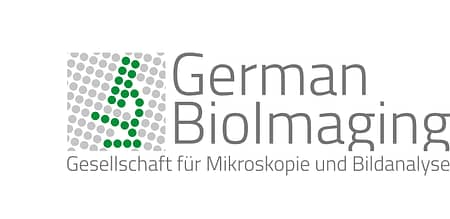Interview with Janina Hanne, Stefanie Weidtkamp-Peters and Elisa May, managing director, chair, and former chair/co-founder) of German BioImaging, the German Society for Microscopy and Image Analysis (GerBI-GMB e. V.) on Core Facilities
What are core facilities?
Steffi: In short, they are a place where advanced instrumentation is located, and with expert personnel, namely core facility managers, responsible for their maintenance and optimal performance. Core facilities aim to make the best out of technology. On the one hand, they serve as a meeting point for users which enhances collaboration. On the other, they offer three different service levels: first, they attend requests for new methods/techniques and are in charge of developing and testing; second, they provide an introduction to the system and support the users while performing the experiments; and third, they offer scientific support even before a research project starts (for example they could help decide on the ideal indicator for an imaging experiment).
How has COVID-19 influenced core facilities?
Elisa: Interestingly, GerBI-GMB e.V. recently published a paper on the recommended procedures /guidelines during COVID-19 to allow facilities to run under these conditions. This publication, which has received a lot of attention, is the product of the collaborative spirit of GerBI and was the beginning of an ongoing discussion concerning this topic. We think this is a good example of the ways in which core facilities can influence policy.
What are currently the biggest challenges?
Elisa: One of the biggest challenges for core facilities is how to keep up to pace with technology innovations and new developments in the imaging field. The short innovation cycles create a demand for continuing financial support that is not easy to obtain; especially for small facilities. Operating the facility on a full cost model is not an option in academic research, so facility managers have to be very creative in finding financial resources. On the other hand, the recognition of the relevance of core facilities within the institution could be improved, making it easier for facility managers to be informed about, and align with, the strategic goals of the institution.
Steffi: Another issue we want to change is the perception that core facilities do not belong to the local infrastructure and, therefore, lack access to a travel budget or professional development opportunities, for example. We think that improvements on these points will help their development as independent entities.
What lies ahead?
Steffi: I think that core facilities can further develop their function as hub/networking points. Ideally, they would help identify good biological questions among users which could then be transferred to more technically focused groups so that everyone benefits.
How do core facilities support research grants?
Steffi: Nowadays, core facilities are involved in most grant applications for large equipment, either as the main applicant or supporting other researcher’s applications with usage concepts and technical advice about the best instrument configuration for the intended project. Meanwhile, funding agencies request their involvement in all major instrumentation grants. Regarding research grants, core facilities are an asset, as they may provide the necessary research infrastructures, and help estimate the need for particular instrumentation, or, when needed, researchers can include core facility usage fees in their proposals.
hfp consulting developed a specific course for Core Facility Managers together with GerBI, if you want to know more, please contact us






